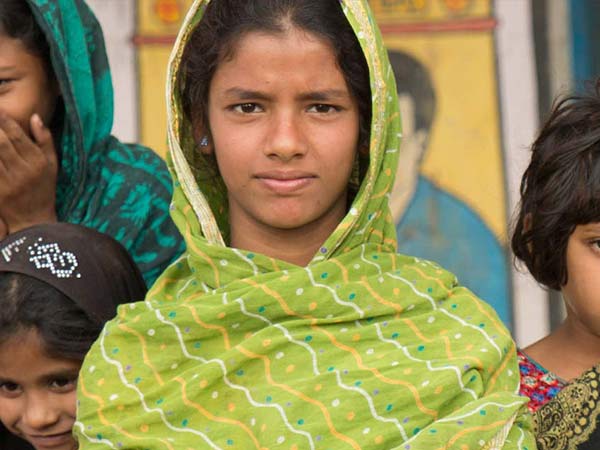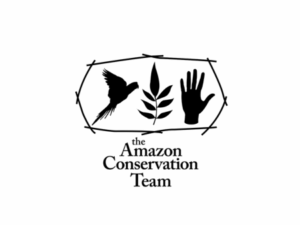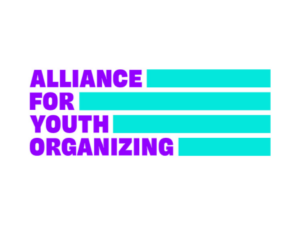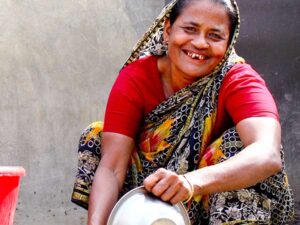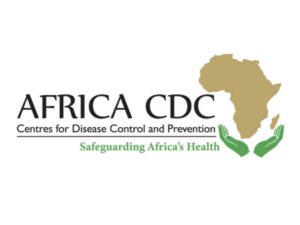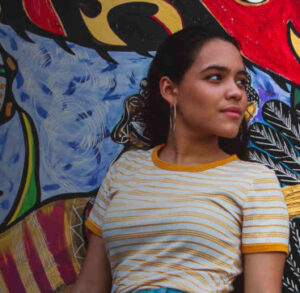Breakthrough works to end violence against women and girls and discrimination unacceptable. They shift cultural narratives within communities and the education system as well as develop leadership capacity among adolescents, youth, and their communities.
Sohini Bhattacharya of Breakthrough spoke with Ashley Hopkinson on November 21, 2023. Click here to read the full conversation with insights highlighted.
Ashley Hopkinson: Can you please introduce yourself, describe the problem that you set out to address with Breakthrough, and talk about how you are responding to it?
Sohini Bhattacharya: I’m Sohini, and I’m the CEO of an organization called Breakthrough, based in India. I have been in the development sector for a little more than 30 years now, with Breakthrough for about 14 years, and I’ve served as its CEO for six years. We work on transforming gender norms to make gender-based violence unacceptable.
In India, women and girls are born into a milieu that is socially restrictive for them. One in four women in India goes through intimate partner violence. One in four girls get married before the legal age, and a huge number of them face sexual harassment. Schools are also restrictive. They push girls towards more domestic roles. Boys can step out [of their expected roles], and it’s all right, but it’s difficult for girls. Things are changing, but not at the rate at which they should be changing. We are far away from covering the global gender gap, or even the national gender gap. As a result, girls do not reach their full potential or step out into the world. In that kind of patriarchal milieu, it’s a struggle for girls to have a voice, to have agency, to be seen and to be citizens of the country.
Harmful gender norms are restrictive and lead to gender-based violence. That is very damaging not just for the psychological and social development of girls, but for the whole society. If girls can reach their full potential, we can ensure there will be justice, equity, and peace in society.
Ashley Hopkinson: Who would you say are the people you’re serving? How do you engage with them? How do you reach them?
Sohini Bhattacharya: We actually serve young people of all genders between the ages of 11 to let’s say 30. We build the leadership and capacity of young people to recognize violence and discrimination in their lives, stand up against it, and negotiate for a better deal in life. We also prepare them to actually lead change, not just in their own lives, but in their family, in their society, in their communities. Ultimately, it’s a movement where young people transform themselves, recruit others, and take community action.
Ashley Hopkinson: So you engage young people and help them recognize what they might need and how they can be their own change-makers.
Sohini Bhattacharya: Absolutely. We help them understand how they, as a group of change-makers, can move the norms at a community level.
Ashley Hopkinson: What makes Breakthrough’s approach distinctive?
Sohini Bhattacharya: We decided to create a generational shift, and to create a generational shift, it’s very important to start young. We work with a gender equity curriculum, which is at the center of this program. With that gender equity curriculum in government schools, we are able to shift minds and create more gender-equitable opinions at a time when young people still have the curiosity to question and are malleable. It’s very hard to shift norms. But if you create an intervention that helps you ask questions, find your voice, raise your voice, and push back against the harmful norms, then over the years you are creating a generational shift. You begin to see the results 10 or 12 years down the line.
We had an RCT [randomized control trial] done on our gender equity curriculum in 2015/2016, after two and a half years of implementation, and it showed very significant changes in gender-based behaviors and attitudes, not just among girls but also among boys. J-PAL [Abdul Latif Jameel Poverty Action Lab], who did the RCT for us, is continuing to study the same 14,000 youngsters who went through the curriculum over a 10-year period. They did a second analysis in 2020, and the third has just been done. A lot of those behaviors are sticking. It works over a long period of time, and this is what we have scaled up across geographies.
Ashley Hopkinson: That’s interesting because as you start to raise your voice, you get more confidence to raise your voice and to ask more questions. It just builds right?
Sohini Bhattacharya: Yes, it just builds. As you come out of school, you join team change leaders, who are young adult gender champions by their own rights in their communities and villages. This program is a sustainability program for us, as well. So if Breakthrough is to exit any of the geographies tomorrow, we know that this group of people is going to carry our work forward. That’s how the transition happens.
Ashley Hopkinson: That’s wonderful. I love that you have been following through with people in the study. Do you have a story of impact that you could share with me?
Sohini Bhattacharya: There are hundreds of stories, but I’ll share just one or two that I find really inspiring. We work in very rural areas, where it’s very difficult to raise these kinds of issues. They’re so embedded in the community, in the society. When we started working with this curriculum in 2015, we were in Uttar Pradesh, one of the largest states in India. We were in schools in a small village, and the group of girls and boys who went through our curriculum one day sat up and said, “Why don’t we have electricity in the school?” They had the courage to go to the village head and say “We need to bring electricity to the school because in summer it’s very hot, and we cannot study that way.” The village head was going through some of the work we were doing at the community level, and he said, “Yes. If adolescents are asking for this, as a village head, I can see the value in bringing power to the school.” He worked with them, and he worked in his constituency to get solar power to that school.
Having solar power, these girls and boys then said, “Okay, now we have solar power, but this road in front of the school is not paved. It’s a dirt track. When monsoons happen, the road gets filled with water, and we can’t come to school.” They went back to the village head, and the village head went back to his leaders, and they helped pave the road in front of the school.
Now you can see girls coming [to school] on bicycles. The students are a little older, they’re about 18/19 now, and they have joined our team change leaders. They are now campaigning to have a higher secondary school in that village because the higher secondary school is 20 kilometers away, and most girls are not allowed to go to that school because the road is unsafe.
You see how incrementally they’re beginning to have confidence in their demands. It’s really democracy. It’s being a citizen of your country. There are girls from that school who now bicycle 13 kilometers and 20 kilometers to go to college. You can see a list of the young people’s demands in the government office in that village cluster, and the government is listening to them.
That’s how girls and boys who had no idea what violence is, and who normalized violence in their lives, change and inspire change in the village. This has also influenced the village head to look at women’s groups. He’s paying attention to them. It has a ripple effect. From the youngsters to the adults to the women, everybody’s benefiting in that village.
Ashley Hopkinson: That’s wonderful. I love the inclusion of men in this work. It makes you very distinctive in the gender equity realm. I can see the village head is open to Breakthrough and all these different principles. How have you seen that work?
Sohini Bhattacharya: Right from the beginning, we decided we will work with men and boys because they’re allies in this. If we can’t change their mindsets, we will never be able to achieve equity. Because it’s a community program, and we are in these few villages, we call it a deep transformation model. The community is changing with the adolescents.
Another story that I find very inspiring is that we work in a state called Haryana, which is one of the most gender-aggressive states in the whole country. It had a skewed sex ratio a few years back. There are lots of schools in that state, but girls only study until age 11 or 12. Very few go to college because the norms are very restrictive. There was this village in Haryana where we were working, and no girl had ever gone to college from that village because the college is far away, and there was no direct transport. Parents didn’t feel safe sending their girls to college because safety is connected to honor. There is this concept that if something happens to a girl, the honor of the village will be destroyed.
These few girls went through our program, and one girl in particular started asking, “Why can’t we talk to the transport agency to make sure there is a bus that connects our village to the college?” She again went to the village head because the village head is in charge of all that. They spoke, and they went together to meet the government transport agency. The government transport agency heard them and saw merit in their request. The girls promised that if they connected three village clusters, there would be more than 10 girls using that transport service to go to college. So they started a transport service connecting three village clusters, and 18 girls from that village now go to college. This was about two years ago. The interesting fact is that 11 from that village also started attending college due to the transport service. That’s how change happens.
Ashley Hopkinson: Do you have any insights or teachable lessons that you’ve taken from the work you’ve been doing?
Sohini Bhattacharya: I think it’s important to teach young people to ask questions around these harmful things. That can happen if you have structured time with them. We are in government schools in these villages, and being in a school helps us get that structured time. That’s number one. Number two is that if you think just speaking to adolescents and young girls or young boys is going to solve the problem, it will not. You have to have a community approach. You have to talk to the significant adults in their lives: the parents, the teachers, the health workers, the local government agencies. Number three, it’s very important to have the buy-in of the government because ultimately, the government is the one who’s really going to implement things for people in the village. And number four, you cannot do any of these things in a confrontational way. We use a lot of media, we use a lot of entertainment, we use pop culture. We use theater songs to bring this in front of people in the least confrontational way possible.
Changing the culture is a very significant part of our work. We always use local culture, local cultural songs, art forms, stories, whatever they practice at home. These are the things that we use to flip the story and show an alternative.
Ashley Hopkinson: How do you measure success? What is the evidence, for you, that you’re making progress?
Sohini Bhattacharya: We measure two or three things. One is that we measure whether girls are adding more years to their schooling. That’s one of the surest ways of helping them learn. If they stay in school longer, they’ll get married later. That’s one of the parameters that we study.
Another is whether they’re developing the self-confidence and self-esteem to stand up and voice their opinions and concerns. We measure whether intergenerational conversation is increasing or not. In rural areas in India, parents and children do not talk to each other. They don’t have that shared language. Through our program, we have seen an increase in intergenerational and intergender conversation. So we ask: are those increasing?
Lastly, we consider whether they are recognizing and identifying discrimination and violence in their lives. It’s important not to normalize it, and to recognize it, so they can develop their voice and agency.
We also focus very clearly on boys and girls being equal and sharing power. There’s no one group with more power. Power is shared, and violence is not acceptable. These are the norms that we try to change, and there are little indicators that we measure. Whenever we have the resources, we get a third party to evaluate a program. We constantly monitor our own work, and we run concurrent evaluations twice a year on all our programs to see whether we are advancing, what course correction or change is needed, where we need to change, and whether we are on the right track or not.
Ashley Hopkinson: That last point leads me to my next question. Every social innovator learns from what worked as much as from what didn’t work. Could you describe something that you tried that didn’t work, or that didn’t meet your expectations? What did you learn from it?
Sohini Bhattacharya: Before COVID, in 2018, we created a scale-up plan. That plan was to go from village to village and state to state with the gender equity curriculum and cover a critical mass so that we reach 1 million adolescents, and we start to see change happening.
When COVID happened, we realized that was not the best scale-up plan because it would take enormous amounts of time and require enormous amounts of resources. We decided to do deep transformation work in a few geographies where we could remain for a long period of time. In those geographies, we have already reached 1.5 million adolescents with our gender equity curriculum. We decided that for the scale-up, we would work with the government and create a system change model within the government schooling system. We’re applying a gender lens to the education system itself, from curriculum to teachers to administrative staff to school leaders, and even to parental engagement. We started with two states. In 2021, we signed an MOU [Memorandum of Understanding] with two state government departments, and we are doing the system change model in these two states now. This will help us reach 4 million adolescents in the next five years and train about 66,000 teachers on how to bring gender-equitable behaviors into the classroom. It’s a very ambitious project, but we hope that by implementing it directly in these two states, we’ll be able to create enough buzz that many other states will want to do the same.
Deep transformation also gives us the ability to innovate in a smaller geography to see what is working, then apply that at scale within the school program. We’ve been experimenting with parental engagement events in our deep transformation areas, and now I think we have a model that we can build into the system change program that will help create a gender-transformative school system. We constantly go back and forth. The scale is through the government and the education system. They enhance our ability to reach many more young people. We have brought a gender lens into three subjects in one state at the middle school level. Now, we are saying we’ll reach 4 million adolescents, but in perpetuity, there will be many more adolescents who will be learning more about gender and other progressive pieces. We’ll be dealing with them ad infinitum. So it’s quite a big scale that we are looking at.
Ashley Hopkinson: Can you talk more about how you are working on system-level change? Have you been thinking about using any new approaches, or pursuing new partnerships, in your system change work?
Sohini Bhattacharya: We are taking advantage of the national education policy that the government came up with in 2020. It doesn’t give too much of a roadmap, but it talks about gender and a gender fund as components within [the policy.] We have taken that as an opportunity to create a roadmap and give it to a state government saying, “Look, here is a way to do this.” We are doing this in partnership with two other organizations because while we are very good at gender, at training and curriculum development, we do not know how to work with the government administrative staff. So we partnered with an organization that does know that very well. Another organization is an expert on parental engagement, so we’ve partnered with them, too. We are also codifying this. Within a year’s time, this code, or toolkit, will be out. We have 29 states in India, so we can go to the other 27 states and say, “Look, here is a model and we would like to work with you as technical advisors to implement this model.”
We are creating opportunities to bring together all the players in education. We come from a gender vertical, so we are not seen as education people as such. But we are trying to convene large numbers of people in education and show that it is essential to talk about gender in schools because if you do not, you are not creating a favorable environment for young girls in schools. One of the reasons why girls drop out of school is because they do not find a safe school space. As you know, schools can be really transformative and influential in the community. We are trying to create a platform. We’ve come out with the e-magazine Engendering Education, and we are trying to inspire other people to bring their strategies into it.
Ashley Hopkinson: What would you say you need from other actors or people in the space to help advance this level of social change?
Sohini Bhattacharya: We need people to agree that gender is an important component of any “growing-up” lessons. We have life skills, but lessons in gender equity are not an intentional part of any life skills. Understanding gender and gender equity, and developing gender-equitable behavior, mindsets, and attitudes, is very important for a country where patriarchy is very deeply embedded. We want every school teacher, we want every education expert, to acknowledge that. Acknowledgment is half the game. If you do not acknowledge it, you’ll never actually get there. So we want people to agree and say, “Yes, this is needed.”
Ashley Hopkinson: Aside from funding, what would you say is a challenge you are facing in this work, and how are you working and problem-solving to overcome it?
Sohini Bhattacharya: We don’t offer any services. We don’t offer schools, we don’t offer homes, we don’t offer legal aid. Our work is changing mindsets and building opinions. People do not see it. But when you tell stories, people say, “Wow, how did that happen?” That happened because a certain individual or a certain community decided to do things differently. That is one difficult part of our work. It’s intangible, it’s not seen.
Our main ingredient for a successful program is people. We need to have access to really good people who understand gender. One of the ways we are solving this is by bringing on a lot of young people who are just entering the workforce as trainers and community developers. That’s a fantastic way of making sure that we have people who already understand what we are working on.
Those are our two main challenges. The third main challenge is that gender is a very personal concept. It’s very important for everybody who’s working on climate change, or with farmers or with schools or whatever it is, to be intentional about gender in their work. Gender gaps are huge across the world. The World Economic Forum’s Gender Gap Report says we will not be able to close the gender gap for another 169 years. We can’t wait that long. I think because it’s a personal issue, sometimes people do not want to engage with it. I’ve often noticed that when I’m speaking to a room full of people, people would not make eye contact, they would look away because whatever I’m saying speaks to something in their psyche, something they’ve done. It’s quite disconcerting. I think there is a need for other social entrepreneurs and the community at large to understand that gender cannot be a standalone. It has to be an intersectional issue in all the work that you do.
Ashley Hopkinson: What’s your vision for Breakthrough in the next five years? How do you hope the organization will evolve?
Sohini Bhattacharya: You have to be utopian and very optimistic. I think this gender-transformative school system that we are building is going to catch on, and there are going to be at least 10 more states clamoring for something like this, or doing something like this. We don’t have to be involved; that doesn’t matter. Even if you’re doing it on your own, it would be a success for us. What we would ultimately love to do is establish norms that let girls emerge from school communities and have a career. [Norms that encourage girls to go] out into the world and be public people, to take public transport, and go to work somewhere. We are already seeing it in some of the areas where we work. Girls are taking up very unlikely professions. They’re becoming welders, they’re becoming plumbers, they’re becoming insurance agents, which are not common professions for women. We’d love to see more of that happening, more girls stepping out and taking up space. One problem India has is very low workforce participation by women. We hope that by talking to girls about careers, aspirations, and dreams, we’ll be able to persuade girls to take up professions and careers, and for their communities to support them in doing that.
Ashley Hopkinson: Is there anything that you want to add about Breakthrough?
Sohini Bhattacharya: I want to add that Breakthrough is a feminist organization. We believe in feminist leadership. We believe in building leadership outside the organization as well as inside the organization. We have a four-pronged approach to leadership within the organization. We cultivate a very open and seamless hierarchy and free workspace. We look at building the leadership of everybody who shows promise as a leader, from the bottom up. We also look at capturing people’s voices when designing our policies and systems, so that everybody’s voice is reflected. We believe in being cutting-edge. Those are our four principles and values.
Ashley Hopkinson: I think those are wonderful, and I see them in the work that you’re doing with education. I love the intersection. Thank you for talking with me today.
Click here to read the full conversation with insights highlighted.
Ashley Hopkinson is an award-winning journalist, newsroom entrepreneur and leader dedicated to excellent storytelling and mission-driven media. She currently manages the Solutions Insights Lab, an initiative of the Solutions Journalism Network. She is based in New Orleans, Louisiana.
* This interview has been edited and condensed.
Learn about other innovative ways of ending violence against women.

